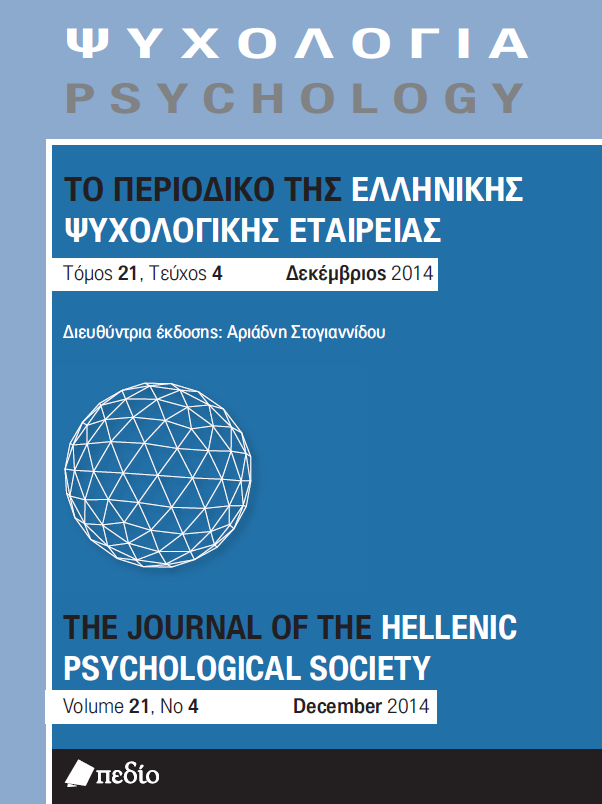Positive illusions of self and risk-taking in adolescence: A literature review

Abstract
The objective of this study is, through the relevant literature review, to point out the associations between risk-taking behavior during adolescence and positive illusions about the self, that is imaginary audience and personal fable ideations. Positive illusions about the self and risky behavior in adolescence are usually investigated as a direct result of adolescent egocentrism. in this study we briefly describe the main theoretical approaches of positive illusions about the self. Moreover, research findings are presented on the mediating role of self-esteem in the relationship between positive illusions about the self (mainly personal fable) and risk-taking in adolescence. also, we discuss age and gender effects on the complex phenomenon of risk-taking and we focus on adaptive developmental functions of positive illusions about the self. in particular, we focus on the dual function of the personal fable ideation: the illusions of omnipotence and invulnerability either lead adolescents and young adults to risk-taking, or they contribute both to a positive self-image projection in the future and to individuals’ functional adaptation to new situations in their transition from adolescence to adulthood.
Article Details
- How to Cite
-
Μπάτζου Κ., & Τσούρτου Β. (2017). Positive illusions of self and risk-taking in adolescence: A literature review. Psychology: The Journal of the Hellenic Psychological Society, 21(4), 470–494. https://doi.org/10.12681/psy_hps.23513
- Issue
- Vol. 21 No. 4 (2014)
- Section
- THEORETICAL REVIEWS

This work is licensed under a Creative Commons Attribution-ShareAlike 4.0 International License.
The journal PSYCHOLOGY adopts a Platinum open-access policy. Submission, processing or publication costs are waived by the Hellenic Psychological Society. Papers published in the journal PSYCHOLOGY are licensed under a 'Creative Commons Attribution-ShareAlike 4.0 International' licence. The authors reserve the copyright of their work and grant the journal the right of its first publication. Third-party licensees are allowed to use the published paper immediately after publication as they wish, provided they retain the defined by the license copyright formalities, regarding the reference to its author(s) and its initial publication in the journal PSYCHOLOGY. Moreover, any adjusted work should be shared under the same reuse rights, so with the same CC license.


